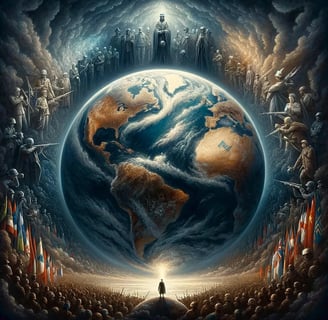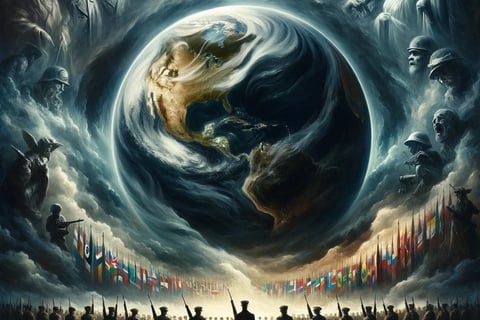The Specter of World War III
A Speculative Analysis of Modern Warfare and Geopolitical Tensions
NEWS


The Prophetic Letter and the Reality of Modern Warfare
Over 150 years ago, a story surfaced about a soldier named Albert Pike, allegedly predicting the first two World Wars and a third. While the authenticity of this letter remains unconfirmed and likely a hoax, the concept of predicting global conflicts isn't far-fetched in today's context. As tensions simmer globally, the notion of a third World War looms, albeit in a form starkly different from the trench warfare of the past. This brings us to a chilling consideration: are we, in some sense, already in the midst of a third World War?
The Changed Nature of Warfare: Beyond Trenches and Propaganda
Modern warfare has evolved significantly from the days of the World Wars. The influence of propaganda, once a powerful tool for rallying citizens to fight, has diminished in the era of free information flow. Today, convincing populations to engage in overseas conflicts for unclear reasons is increasingly challenging, as seen in the widespread American opposition to sending troops to Ukraine. However, convincing people of a neighboring threat remains relatively easier, playing into human psychology and media influence.
Regional Conflicts: The New Face of Global Tensions
The current landscape of global conflicts predominantly features regional disputes over long-contested territories. These include Russia-Ukraine, China-Taiwan, and Israel-Palestine. While some of these conflicts involve geopolitical rivals, others interestingly involve technically allied nations, reflecting the complex nature of modern alliances.
Israel-Palestine Conflict: A Case Study in Geopolitical Alliances
A critical example of these complex alliances is the Israel-Palestine conflict. Despite global condemnation of Israel's actions in Palestine, countries like the United States continue to provide military support. This contradiction highlights the binding nature of geopolitical alliances that often supersede global interests, as evidenced by the US-Israel Memorandum of Understanding under the Obama administration.
BRICS: Economic Alignment and Geopolitical Tensions
The BRICS nations (Brazil, Russia, India, China, South Africa) represent an economic alliance that challenges the traditional Western-led world order. However, even within this group, significant tensions exist, such as the India-China border dispute. These internal conflicts within alliances add another layer of complexity to the global geopolitical landscape.
The Specter of a Third World War: A Different Kind of Conflict
The Third World War, if it were to occur, would likely not resemble the world wars of the past. Instead, it might manifest as multiple regional conflicts involving micro-wars and disputes. This scenario would result in less human loss compared to traditional world wars but could lead to significant economic and social turmoil.
Geopolitical Alignments and the Role of the European Union
The European Union stands at a crossroads, with member states potentially aligning with either the US or China based on their energy dependencies and policies. This alignment could lead to a split within the EU and drive countries into the emerging multipolar world order dominated by the US and China.
The Uncertain Future of Global Stability
In conclusion, the modern geopolitical landscape is marked by a shift from large-scale wars to regional conflicts and proxy wars. The potential for a third World War exists in the backdrop of shifting economic powers and resource struggles. As the world navigates this period of uncertainty, the role of economic and political alliances will be crucial in shaping the future of global stability and peace.



